During training, most professional football players wear a small tracker under their shirt. The tracker is embedded with a range of sensors like accelerometers, gyroscopes and compasses, as well as a GPS chip and other bits of technology. With this, it becomes possible to track players’ position, direction, speed of moving across the field, acceleration or deceleration, and more. By combining data gathered by the trackers worn by multiple players, it becomes possible to study their relative positions and the impact of each jump and tackle. This helps to determine why a game turned out to be the way it did, and learn lessons for future games.
Such training aids are helpful for amateurs too. For instance, Catapult’s Playertek smart vest can not only improve your game but also compare you with top premier league players!
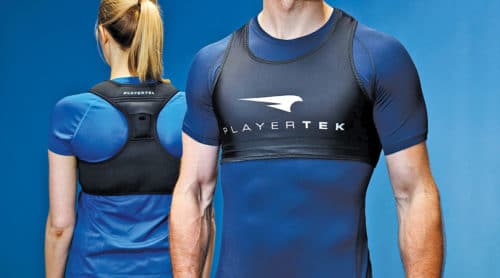
Indeed, wearable technology has matured beyond our imagination. Although smartwatches, fitness bands and virtual reality headsets continue to top this space, there is a lot more technology to wear today. You can wear technology devices as a watch or band, stick on like a patch, attach to your shirt like a cufflink, or show off in the form of fashion jewellery! Coming in exciting, highly fashionable and artistic forms, these help improve health, fitness, posture, beauty, personal safety, coaching, social interactions and more.
There has been a dramatic improvement in the availability, variety and performance of wearable devices, thanks to technological advancements in areas like batteries, materials, processors and sensors. Technology that fitted into a mobile phone sized device a few years ago now fits snugly into a small and flexible patch that you can stick on your body or stitch onto your dress. As technology uptake improves, concerns about security and privacy are sure to be ironed out. So let us take a look at some of the hottest devices in this space without dampening your enthusiasm.
Watches and bands continue to rock
There is something very convenient about watches and bands—you can just snap them on or remove when you want. This makes them one of the easiest wearable technologies. That said, some expert trend-watchers claim that the popularity of watches and bands has plateaued with the emergence of less obtrusive forms of wearables like patches.
Nevertheless, there were many exciting options on show at Consumer Electronics Show (CES) this year.
The usual fitness band and smartwatch players came up with newer versions with additional features. Garmin, for example, showcased Forerunner 645 Music, a watch with music support. You can store and play up to 500 songs, neatly organised as playlists. Plus, this watch also includes Garmin Pay support, so you can use it to pay for stuff you buy.
Omron showcased HeartGuide, a blood pressure monitoring smartwatch that can be used for general fitness or healthcare purposes. The watch, which is pending FDA approval, uses an inflatable cuff to take blood pressure readings. You can take oscillometric readings at the press of a button or set the device to automatically take readings throughout the night. The data can then be pushed to a smartphone app and shared with your doctor. The watch is also capable of regular smartwatch tasks like notifications, sleep tracking and step counting.
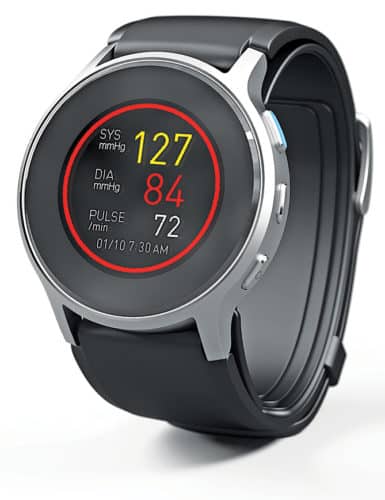
Casio unveiled a rugged sports watch, GPR-B1000, with solar-powered GPS navigation. A five-hour charge enables standard GPS functioning for 33 hours. Thereafter the watch can instantly resume its GPS functioning if held in bright light. If left in sunlight for four hours, the watch gains enough solar charge to operate the GPS for an hour more. So, you can continue running even after sunset.
Casio’s Triple Sensor technology collects compass bearing, atmospheric pressure, altitude and temperature data. Navigation features are similar to other on-watch navigation systems such as Garmin and Tom-Tom. The screen is small, but the route is visible enough for you to stay on track. You can zoom in and out if required. The dust-proof and dirt-proof watch can withstand harsh weather conditions, and is a good bet for trekkers!
But, these bulky watches are not for the fashion-conscious folks. Small and elegant hybrid watches are what they like. Hybrid watches look like stylish designer watches with a dial, two arms, et al, but deliver the functionality of smartwatches. These are ideal for people with small wrists who are not comfortable with large sporty smartwatches.
There are several hybrid watches from brands like Armani Exchange, Emporio Armani, Michael Kors, Kate Spade, Diesel, DKNY, Tory Burch and Fossil. One of the recent interesting launches is Misfit Path, which is claimed to be Misfit’s smallest hybrid so far. It has a stainless-steel case with matte finishing. A three-axis accelerometer tracks steps, calories burnt, distance travelled, sleep, etc together with the smartphone app that lets you set goals, and create alarms and reminders. It also connects to your smartphone and delivers calls, text messages, emails and notifications. With the press of a button, you can control music, capture photos and locate your phone if you misplace it. The device is water-resistant. Its replaceable battery lasts up to six months, so you need not bother about charging.
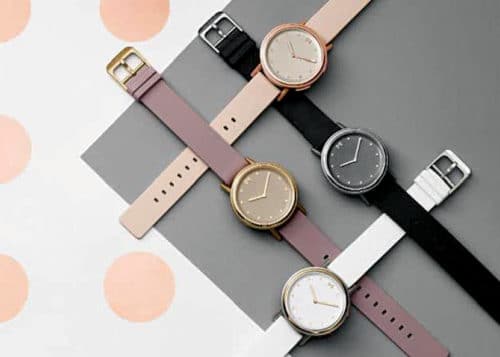
Patches growing popular
Of late, with the advent of flexible materials and electronics, patches are becoming very popular. These are handy and unobtrusive, and do their jobs better as they sit snugly, closer to the body. While it is fashionable to wear a sports watch or fitness band, not many people want to show off their health monitoring tech aids. After all, who will want to wear a watch that measures electrolytes in sweat, and explain it to their friends too?
An unobtrusive patch that disappears below your clothing is just right for such healthcare purposes. Patches are very convenient for monitoring health conditions, predicting trends and preventing harmful consequences.
According to statistics from Technavio, the global wearable patch market is expected to grow quickly through 2020, driven mainly by the US market. Research firm Tractica expects connected wearable patches to be one of the biggest drivers for body sensors. According to their report, wearable patches find applications in sports, enterprise and industrial markets as well. It forecasts body sensor shipments to increase to 68 million in 2021 from 2.7 million units in 2015.
Some of the growing companies in the wearable patch space are Smartpatch, Kenzen and Lief Therapeutics

Kenzen’s Echo smart patch, for instance, collects data from sweat. Sweat contains electrolytes, metabolites, small molecules and proteins, which are measured by sensors on the patch. The data is analysed on a smartphone, and used to predict and alert users about conditions like increased glucose levels, dehydration or cramps.
According to Dr Sonia Sousa, co-founder and CEO of Kenzen, “By putting on a patch, people can get real-time data on dehydration level, heart rate, respiration and core body temperature to make decisions about their health.”
Lief Therapeutics has developed a bio-sensing patch that sticks to the chest and tracks heart rate and breathing using an electrocardiography sensor. When it detects a stressful condition, the patch vibrates to help the user regain a calmer breathing rhythm. Apparently, Lief developed this meditation system after measuring and studying the heartbeats of monks in India!
Clothe yourself in technology
You can now buy clothes with technology inside—either stitched or woven into the fabric. Smart clothes are used to study sweat, monitor gait, track activity and more. Some clothes also help to cool or warm your body according to environmental and health conditions.
Spire and Swim.com have joined hands to launch smart swim suits that automatically track the wearers’ pool time. Spire’s Health Tags, which are fitted near the beltline of the suit, automatically sync data to users’ phone. Swim.com’s app is used to make sense of the data.
Google and Levi are working on Project Jacquard, where the technology is actually woven in your clothing. So your dress becomes like a touch screen, and you can actually raise the volume by just putting your hand into your pocket, or take a call by tugging the collar!
Several famous designers are also beginning to understand that a bit of technology woven into a dress makes it futuristic and fashionable. Maddy Maxey of Loomia and Billie Whitehouse of Wearable X are some well-known names working on smart fabrics using conductive inks, built-in haptics and materials that react to their environment. In a media interview, Maxey mentioned that though the technology is developing well, the manufacturing processes that can take the products to the market are still missing.
Heard of hearables?
Another emerging area of wearables is the so-called ‘hearable.’ This part of the industry, according to trend-watchers, has boomed in 2017 and is slated to get smarter this year. Some are hearing aids with smart twists, while others are smart ear-buds that anyone can use.
Bragi, which developed the first in-ear computer in 2015, is partnering with Mimi Hearing Technologies on Project Ears, which aims to create an FDA-approved solution for hearing issues such as tinnitus. The solution revolves around the fact that each person has unique hearing requirements. The intelligent hearing amplifiers perform a scientific hearing test to measure your unique ear-print and program themeselves to optimise your hearing. These give relief from tinnitus with embedded masking sounds that help you relax and forget the ringing in your ears, while you continue to hear other sounds from your surroundings.
There are also two new models of IQbuds from Australian start-up Nuheara. IQbuds Boost stands out with its high level of personalisation, customisation and amplification. Like Bragi, Nuheara has introduced a new feature called Ear ID, which evaluates the user’s hearing profile to create a more personalised hearing experience. Another model, LiveIQ, also includes noise cancellation.
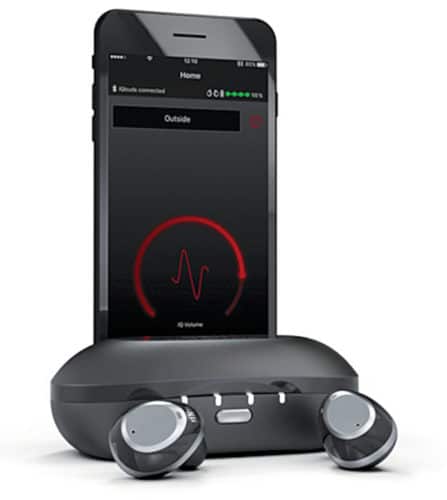
Innomdle Lab, a start-up incubated by Samsung’s C-Lab, has come up with Sgnl—a unique hearable that is shaped not like an ear-bud but as a smart strap worn on your wrist! It uses bone conduction technology to transmit sound from the band through your hand and fingers, into your ear. Basically, once you get a notification, you just place your finger on your ear and hear. It works well for phone calls and notifications. Users can listen to music too, but who would want to keep fingers on their ear for that long? A microphone in the band lets users talk back to the caller or give instructions to their digital assistant.
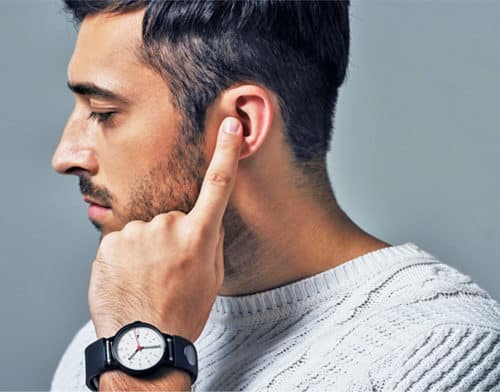
Jabra’s Active 65T earbud is for active people. Its four microphones along with an optimised acoustic chamber enable advanced noise suppression and voice enhancement.
You also get one-touch access to digital assistants like Alexa, Siri and Google. Jabra’s Elite Sport range has even more awesome features including heart rate monitoring and accelero-meters for tracking steps.
And, the best for the last—translation earbuds! Yes, Line Corporation and Naver Corporation have developed Mars translation earbuds that can handle real-time ear-to-ear translation in ten languages including English, Korean, Chinese and Japanese. So, the two of you who don’t know each other’s language can comfortably converse by using these earbuds.
Do we call these as seeables?
Like hearables that support hearing, there are several wearables that improve vision. Samsung recently demonstrated its Relúmĭno app and glasses, which harness the power of a smartphone to enhance viewing for those with low vision. With the comfortable and lightweight Relúmĭno glasses and an image processing software running on the smartphone, a person with low vision can read a book or watch TV much like anyone else does. And, because it uses a normal smartphone, the solution is pretty inexpensive too.
The app and glasses can be used in four modes: Regular mode to make shapes and outlines more prominent, Color Invert mode to read text, Partial Vision mode for those with central or peripheral vision loss, and Display Color Filter mode that reduces glare and works like sunglasses when outdoors.
Eyewear is not just necessity-driven—there are lots of fun-packed options too. For instance, Spectacles by Snap is a snazzy pair of sunglasses with two tiny cameras fitted on either side. It helps you record events at the press of a button, so you can relive them from your perspective at any time in the future. To set privacy fears at ease, the spectacles light up to let others know that you are recording.

There are also innumerable glasses for those who love the virtual world. Examples include HTC Vive, Occulus Rift, Vuzix smart glasses, Samsung’s Gear VR, Google Cardboard and Blackbox VR. However, virtual reality is a separate subject in its own right!
Coaching and training, for the love of sports
A slew of wearables have changed the way people train and play. Right from gait monitoring to game analysis, wearables are helping players to understand and improve their game further.
For athletes, there are tools like Run Free Pro, a sensor-studded headphone that measures speed, distance, cadence, step length and width, vertical oscillation, head-tilt angle, balance, consistency and other factors. Working with a smartphone app, the headphone provides the runner with real-time coaching! The headphones are comfortable to wear and sweat-proof too.
Sensoria and Vivobarefoot have teamed up to develop smart shoes with sensors threaded through their sole. So, apart from speed, pace and cadence, the runner also gets data on foot landing spot, ground time and impact score. There are a lot more wearables for runners from companies like Moov and Milestone, and likewise, for every other sport including football and swimming.
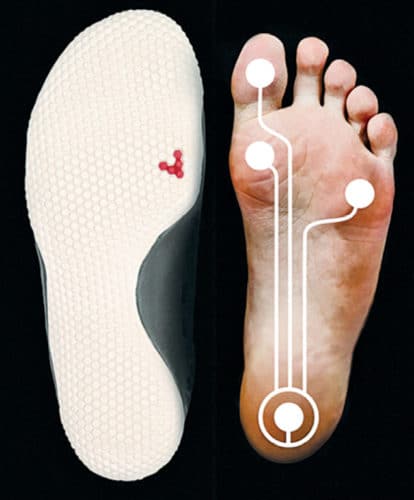
There are wearables that improve players’ safety too. Prevent Biometrics hopes to prevent football players’ common problem of concussions using its Head Impact Monitor System (HIMS), a concussion-sensing mouth-guard. When a player is hit hard, three-channel accelerometers of the device record the impact. The software differentiates between light impacts and serious ones. An alert is issued if the impact is above a certain acceptable level. The mouth-guard lights up and a notification is sent to the associated device so that the coach or other emergency personnel know that the player needs to stop playing for safety reasons.
Stay safe, healthy and beautiful
Improving personal safety
ZTE, Wearsafe and Qualcomm have teamed up to create unobtrusive wearable devices that improve personal safety by instantly connecting the wearer with first responders, family and other emergency contacts at the push of a button. Qualcomm’s mobile processor Snapdragon Wear 1100 will ensure that these devices are low-power and have next-gen LTE support. While ZTE will provide the rest of the hardware, Wearsafe will bring in the personal security platform, which specialises in giving the emergency contact relevant information about the wearer, such as his GPS location, a 60-second buffered audio clipping of what happened before the button was pressed, and a live audio stream of current happenings.
France-based Helite has developed hip airbags, which protect wearers’ bones from the impact of a fall. A Japanese firm called Xenoma also helps reduce the risk of falls by adapting its smart clothing products initially designed for golfers. Products like these help elderly and disabled people to lead an independent life without always expecting someone’s help even to move around. Not just personal safety but their confidence also gets a boost from such products.
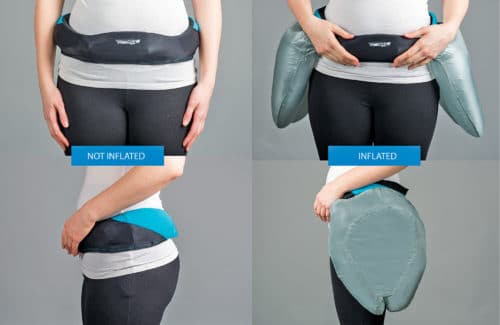
Rise of ‘wearapeutics.’
A new generation of smart, connected, sensor-based wearable medical devices is making healthcare much more efficient. These devices continuously monitor the patient’s condition, give reminders about medicines to be taken, or alert the medical practitioner or caregiver when the situation requires attention.
Insulet’s OmniPod insulin patch pump, Proteus’ smart pills that send an alert when medicines are taken or skipped, Unilife’s wearable injectors, VivaInk’s eSkin sensor patches and TempTraq’s comfortable 24-hour intelligent thermometer patches are some of the recent products. Patches and wearables are becoming increasingly comfortable, thanks to the development of biocompatible materials, some of which are made of stretchable semiconductor technologies such as elastomer-polymer. To avoid privacy and security mishaps, doctors and patients must check whether the devices they use comply with the Health Insurance Portability and Accountability Act (HIPAA).
Stay beautiful
At Consumer Electronics Show (CES) this year, L’Oréal unveiled My UV Patch, a next-generation wearable ultraviolet (UV) sensor. The tiny, stretchable patch can be stuck on your skin, bag, sunglasses or nails. It measures UV data and sends it to a smartphone app using near-field communications (NFC). Apart from collating the UV exposure and temperature from the patch, the smartphone app has an application programming interface (API) that combines information about local air quality to give you a complete picture. You can use this app to track your run or morning exercise too. Using all this info, you can fine-tune your beauty regime.
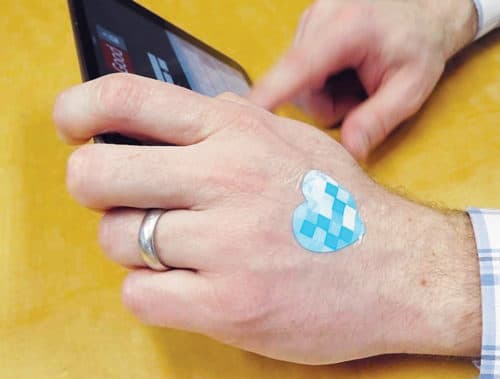
Get your beauty sleep too
There are many smartwatches and fitness bands that monitor your sleep patterns and offer suggestions. Smart pillows and smart beds are also sighted here and there. Phillips recently launched a wearable device that not only monitors but also improves the quality of your sleep. The soft foam headband delivers customised tones to make you sleep deeply. Its pair of built-in sensors connect to your forehead and behind your ears to monitor brain activity. As soon as it detects a condition of deep sleep or slow-wave sleep, it starts playing a white noise in a slowly repeating pattern to help you stay in that state of deep sleep. White noise is a sound that is consistent across all audible frequencies. It helps to mask environmental sounds, helping you sleep better.

It is evident that wearables have broken all barriers and gotten into almost every field. There are connected safety jackets for miners and deep-divers, uniforms with close combat sensors for army men, and GPS-enabled patches that let you keep an eye on your kids or elderly parents who need care. Name the need, and there is an existing or upcoming wearable for it. Indeed, this field is growing rapidly and the best part is that there is more room to grow with so many opportunities everywhere we look!










